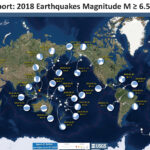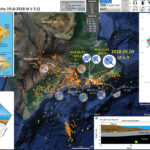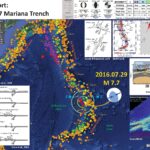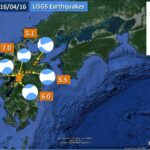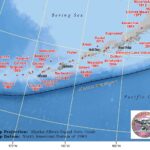Here I summarize Earth’s significant seismicity for 2018. I limit this summary to earthquakes with magnitude greater than or equal to M 6.5. I am sure that there is a possibility that your favorite earthquake is not included in this…
Earthquake-Volcanic Eruption Report: Hawai’i
My USGS Earthquake Notification Service email inbox has been going on overtime. There has been a swarm of earthquakes on the southeastern part of the big island, with USGS volcanologists hypothesizing about magma movement and suggesting that an eruption may…
#EarthquakeReport Mariana Trench!
Earlier this year, there was an intermediate depth earthquake along the Mariana Trench with a magnitude of M 7.7. I was traveling and did not have the opportunity to prepare a report at the time. While getting together my annual…
Earthquake Report: Japan Update #2
Here is an update to the seismicity from the past couple of days in Kyushu Japan. On 2016/04/14 there was an earthquake with magnitude M 6.2 that initiated this series of earthquakes. The largest aftershock was a magnitude M 6.0.…
Volcano Report: Pavlof
Pavlof Volcano (PV) is erupting. PV is located near Sand Point Alaska, along the eastern Aleutian Magmatic Arc. The Alaska Volcano Observatory placed the PV into alert level “warning” and aviation color code red. Below is the description of the…

